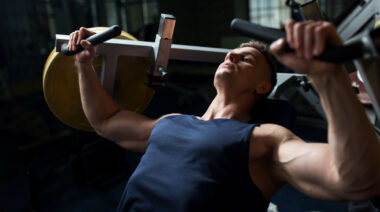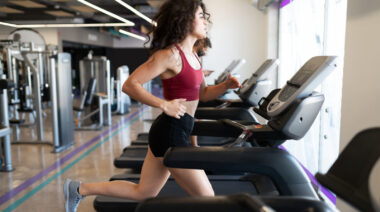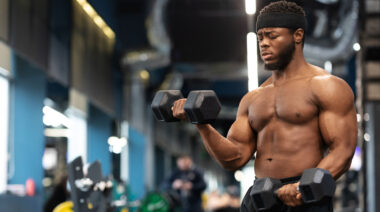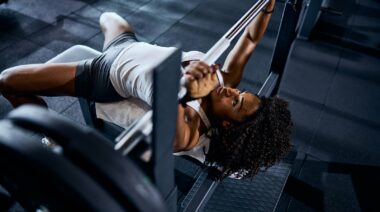Less work, more gains. That sounds like a pretty good deal, doesn’t it? Where do I sign? Let’s look into this proposition in more detail and focus on these factors:
- The confines of your genetic endowment (body type and limitations) and its potential to develop.
- The post-training factors of dietary habits and recovery time.
- The reality of exercise as a stressor and the desired adaptation you are seeking.
Consider your goals: get stronger, improve endurance, shed body fat, improve your physical looks, or the total package of all those combined. You wish there was an easy path to achieve those goals. But you’re smart, which means you know it will take a lot of work to make those changes, depending on your body type, your current exercise regimen, and the all-important food intake component.
So how do you maximize your progress with the least amount of exercise?
Take Care of Your Diet First
First things first: you can only do so much within the confines of your body type.
You may be tall or short, have wide hips, narrow shoulders, a big booty or a flat one, be pear or apple-shaped, etc. You do, however, have control over your fat-to-muscle ratio, regardless of your genetic endowment.
You must commit to shoring up your diet. That is considered to be around 80% of the battle to shed body fat, look better, and become more fit. Without a firm grip on food intake factors, you’re making it difficult to accrue positive results. To lose body fat, there must be a negative calorie balance. Take in less and burn more. You also need to eat real food: fresh vegetables and fruit, lean proteins, good fats, and less processed foods.
The harsh reality of your genetics and the dedication required to eat properly can be disheartening. But if you have those going for you, what can you do exercise-wise to maximize your potential? Remember, the exercise component is not the end-all, be-all part of the equation. Therefore, exercise intelligently and efficiently. Don’t waste your valuable time attempting to out-exercise genetic limitations and poor dietary habits. You do not need to commit hours upon hours of time in the gym to lose body fat, build shapely muscle, and look better in front of your full-length mirror.
The late Arthur Jones was a man who was well ahead of his time. Although others in the past can be credited with limited, hard effort in training, Jones is considered the most recent (relatively speaking) advocate of that type of training: all-out effort, minimal exercise duration, and attention to adequate recovery time. “Flip the switch,” move on, and let the body heal itself.
Remember, doing something is 100% more than doing nothing. Doing that “something” in limited volume with no-holds-barred effort can be enough stimulus to facilitate physical gains for the average trainee.
The “Less is More” Program
If you’re with me at this point and want to give it a spin, try the following routine for eight weeks. The rules are simple:
- 100% effort each set. Don’t stop if you can perform another repetition (safely, with a partner). Record the result of each set to assure objective progression.
- Attempt to progress in each set of every workout in terms of the amount of resistance used and/or the number of repetitions performed within the prescribed range. Simple progression like that works.
- Take a complete day off after each session (i.e., M-W-F or T-Th-Sa).
Day 1: Total Body
Warm up as needed, then perform one set of each of the following:
- Multi-joint leg push (barbell squat, leg press, or dead lift): 20-25 reps
- Hamstrings/glutes (leg curl, Romanian dead lift, or back extension): 15-20 reps
- Multi-joint leg push (lunge, goblet squat, or machine squat): 10-15 reps
- Pull down/pull up (wide or close grip): 15-20 or max reps
- Overhead press (barbell, dumbbell, or machine): 15-20 reps
- Low row (bent-over barbell or dumbbell row, plate-load or pulley row): 15-20 reps
- Chest press (barbell, dumbbell, or machine): 15-20 reps
- Upright row (barbell, dumbbell, or machine): 15-20 reps
- Incline press (barbell, dumbbell, or machine): 15-20 reps
- Abdominals (choose any): 20-30 reps
Day 2: Upper Body
Warm up as needed, then perform two sets of each of the following exercises, using the rep ranges provided:
- Chest press: 12-16 and 8-12 reps
- Low row: 12-16 and 8-12 reps
- Overhead press: 10-14 and 6-10 reps
- Pulldown/pull up: 10-14 and 6-10 or (or 2 x max reps for pull up)
- Incline press: 8-12 and 4-8 reps
- Upright row: 8-12 and 4-8 reps
Day 3: Lower Body
Warm up as needed, then perform the sets and reps indicated:
- Multi-joint leg push: 15-20, 10-15, and 5-10 reps
- Hamstrings/glutes: 12-16 and 8-12 reps
- Multi-joint leg push: 12-16 reps
- Hamstrings/glutes: 10-14 reps.
- Abdominals: 15-20 and 10-15 reps
Don’t Overthink Your Training
If you’re training to become stronger and improve your general fitness, you don’t need to spend hours of wasted time performing endless sets of various exercises at sub-maximum effort. If you’re training to only lose body fat and improve your physique, 80% of that goal is your diet and the other 20% is a minimal menu of basic resistance training exercises performed at a high effort for a minimal volume.
Look at your current resistance training program and ask yourself these questions:
- Are you performing needless multiple exercise sets?
- Are you exuding sub-maximal effort in each set?
- Are you training too often and not allowing for adaptation to occur?
Contrary to conventional wisdom, more is not always better. If you work hard and create a stimulus for adaptation, minimal training volume and adequate recovery and nutrition will suffice. In the future, think “minimal” when you train. In turn, your training will become more time efficient. Train with maximum effort, and you’ll realize positive results, provided your nutritional intake is sound and adequate recovery time is allowed.
Lose the rubber bands and get some real function in your fitness:
How Sports Performance Can Fix Functional Training






